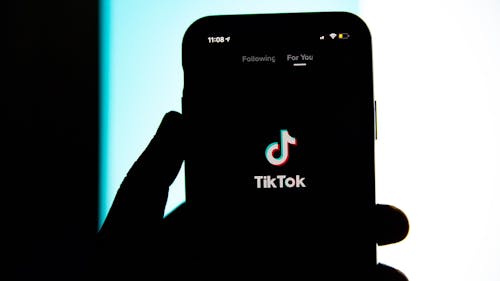TikTok beauty trends are more toxic than we think

From promoting Barbie doll proportions to Disney princess’ "damsel in distress" trope for women, children’s media has long been criticized online for its impact on young children — especially young girls.
But these days, children are no longer sitting in front of screens playing Disney films or playing with dolls: They’re online too, on social media, unfiltered from the toxicity of the internet.
TikTok is perhaps the most popular tool for online connection among the youth of today, and while the application's terms of service dictate that it’s for those 13 and older, most of Generation Z, including those who are still pre-double-digits, are on the app.
In the past decade, social media has been under fire for its impact on how young people view themselves, but TikTok is a special case.
Unlike Instagram, where young women primarily see unrealistic and edited images of celebrities that could negatively impact their self image, TikTok is saturated with "normal" people, rather than the rich and famous, who criticize their bodies and encourage others to participate in trends that perpetuate harmful beauty standards.
A lot of these trends are inherently problematic. Aside from the fact that they encourage young women to put their bodies under scrutiny for a trend or the chance to "go viral," these trends result in fat-shaming and the perpetuation of Eurocentric and racist beauty standards.
One of these popular trends on the app involved users showing off side profiles. Although the trend didn’t start out to be inherently toxic, the comment sections became filled with bullying about jawlines — notably on plus-sized people.
A subsequent trend of making videos on how to remove double chins or to change nose shapes for filming resulted in ridiculing those without small, straight or traditionally European noses, evolving this seemingly benign challenge into something incredibly harmful.
Another viral beauty trend involving putting your finger to the tip of your nose and seeing if it brushed your lips dominated the app, with most of the videos captioned with some variation of, “If your finger touches your lips, you’re attractive.”
Even though most social media criticism revolves around women, many of these videos also extended to include men, fostering an equally toxic environment for young boys on the app.
Vulnerable groups of boys see men who are tall, ripped and white go viral on the app for trends involving, almost solely, how attractive and desirable they are. Plus-sized men and men of color rarely, if ever, achieve the same levels of fame that white, conventionally attractive ones do on the app.
Perhaps the most popular trend involved looking at an inverted video of one’s self, and flipping it back and forth to see how symmetrical your face was — never mind the fact that head tilts, hair parts and angles could make someone seem far less symmetrical than they are.
The comment sections again mostly dissolved to bullying, and by using TikTok’s duet feature, where someone places their video to play next yours, people with faces shown to be symmetrical would show their “successful” results next to those of people upset by their lack of symmetry.
It’s not always about facial features either, or even about the videos themselves. Comments of TikTok celebrities and normal everyday women doing anything from dancing along to popular tunes or filming themselves hanging out with friends can, if their bodies fit certain beauty standards, create a toxic environment.
That is no fault of the creator, but it’s incredibly common that comments such as, “I guess I won’t eat today,” appear on videos of thin women — proof that trends on TikTok don’t just extend to creators.
Similar to the aforementioned side profile trend, back profiles is another “beauty” trend that exploded on the app, where people filmed themselves over the shoulder while sitting to see how their backs looked — if their waist was small enough, if their butt was big enough, etc.
On a less safe-for-work note, body criticism got even more intimate with discussion of “innie” and “outie” vaginas, leaving some people on the app insecure about the status of their labia — things the app could never even show.
The question, then, is if TikTok is overrun with children as young as 8 or 9 years old, is this app even appropriate for said children to be on?
Some of the most insidious things on the app won’t be flagged by child safety or profanity filters — children and young adults alike can scroll through the app only to find that innocuous videos of "shhh!" motions is actually a measure of your attractiveness or catch clips of their favorite influencers dancing only to find pages and pages of commented jealousy over thigh size or clear skin.
To make matters worse, there aren't any safety filters that can remove comments full of fat-shaming or racist microaggressions and there is yet to be an algorithm that can entirely eliminate those trends from appearing on your page.
Despite an increase of awareness of how trends and media can affect self-esteem, the online generation isn’t creating a safety net of body positivity and self-love: It’s creating an echo chamber of self-hate, perpetuated beauty standards and an unlimited scroll of new ways to criticize oneself.
As a plus sized woman, trends revolving around bodies have created dents in my confidence — I’m someone a decade deep into navigating how my body is perceived. Young people on the brink of adolescence don’t always have the experience to know their value and the beauty of their bodies.
So the next time you like a video of a trend, or post your own or comment on a video, think: If 9, or 13 or 16 year old you saw this, would they be able to scroll on? Or would they watch and watch and watch, wishing they looked some other way?



